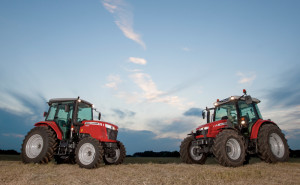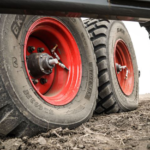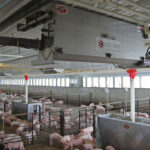Massey Ferguson: Trouble-Free Emissions
Meeting increasingly stringent EPA standards can be difficult enough, without adding frequent maintenance. Fortunately, Massey Ferguson’s emissions system maintenance is practically trouble-free on all midsize and high-horsepower tractors, reducing downtime and expense, especially compared to competitive designs. “First of all,...
Massey Ferguson: Trouble-Free Emissions
Meeting increasingly stringent EPA standards can be difficult enough, without adding frequent maintenance. Fortunately, Massey Ferguson’s emissions system maintenance is practically trouble-free on all midsize and high-horsepower tractors, reducing downtime and expense, especially compared to competitive designs. “First of all,...Meeting increasingly stringent EPA standards can be difficult enough, without adding frequent maintenance. Fortunately, Massey Ferguson’s emissions system maintenance is practically trouble-free on all midsize and high-horsepower tractors, reducing downtime and expense, especially compared to competitive designs.
“First of all, the 4600, 5600 and 6600 series tractors don’t have a diesel particulate filter (DPF) that needs to be cleaned through a regeneration process or replaced at certain intervals,” says Brandon Montgomery, AGCO product manager for Massey Ferguson GC1700-6600 series tractors. Regeneration generates excessive heat, which can be a hazard, but new filters can cost up to $2,000 to replace and even $1,500 to clean.
“Instead, Massey Ferguson 4600 Series tractors are equipped with only an exhaust gas recirculation (EGR) system, high pressure common rail (HPCR) and a diesel oxidation catalyst (DOC) designed to last for the life of the tractor. The same goes for the MF5609 and MF5610 models, which use the same emission technology.
“Even the larger Massey Ferguson series, like the 6600 and the 5600 large-frame models, require nothing more than filling the DEF tank,” Montgomery adds, noting that these models incorporate a diesel oxidation catalyst in combination with a second-generation selective catalytic reduction (SCR) system. “Even then, Massey Ferguson’s variable DEF [diesel exhaust fluid] injection and real-time exhaust monitoring system allow our engines to consume less DEF over time, saving money and refueling downtime.”
The fact that Massey Ferguson doesn’t use a DPF on its midsize tractors is particularly appealing to producers who use smaller tractors in poultry houses, or to pull wagons or sprayers in fruit and vegetable operations.
“Most of those applications are performed at low speeds,” he explains. “However, low engine speeds generate exhaust particulates even faster.”
“The fact that all but the very smallest Massey Ferguson tractors don’t use a DPF is huge,” Montgomery continues. “In most cases, the emissions system requires absolutely no maintenance. That not only saves time and fuel, but reduces the intense heat that builds in the exhaust system during the filter regeneration process.”
For more, see http://www.myfarmlife.com/advantage/massey-ferguson-trouble-free-emissions/.




